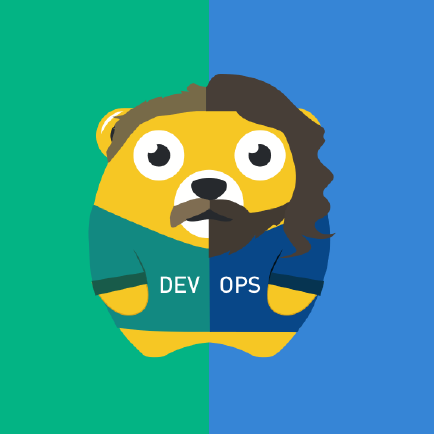How to Restart Pods in Kubernetes [Quick K8s Tip]
There is no 'kubectl restart pod' command. Here's what you can do to restart pods in Kubernetes.

Sometimes you might get in a situation where you need to restart your Pod. For example, if your Pod is in error state.
Depending on the restart policy, Kubernetes itself tries to restart and fix it.
But if that doesn't work out and if you can’t find the source of the error, restarting the Kubernetes Pod manually is the fastest way to get your app working again.
How to restart Pods in Kubernetes
Unfortunately, there is no kubectl restart pod command for this purpose. Here are a couple of ways you can restart your Pods:
- Rollout Pod restarts
- Scaling the number of replicas
Let me show you both methods in detail.
Method 1: Rollout Pod restarts
Starting from Kubernetes version 1.15, you can perform a rolling restart of your deployments.
The controller kills one pod at a time and relies on the ReplicaSet to scale up new Pods until all the Pods are newer than the restarted time. In my opinion, this is the best way to restart your pods as your application will not go down.
Note: Individual pod IPs will be changed.
Let's take an example. You have a deployment named my-dep which consists of two pods (as replica is set to two).
root@kmaster-rj:~# kubectl get deployments
NAME READY UP-TO-DATE AVAILABLE AGE
my-dep 2/2 2 2 13sLet's get the pod details:
root@kmaster-rj:~# kubectl get pod -o wide
NAME READY STATUS RESTARTS AGE IP NODE NOMINATED NODE READINESS GATES
my-dep-6d9f78d6c4-8j5fq 1/1 Running 0 47s 172.16.213.255 kworker-rj2 <none> <none>
my-dep-6d9f78d6c4-rkhrz 1/1 Running 0 47s 172.16.213.35 kworker-rj1 <none> <none>Now let's rollout the restart for the my-dep deployment with a command like this:
kubectl rollout restart deployment name_of_deploymentDo you remember the name of the deployment from the previous commands? Use it here:
root@kmaster-rj:~# kubectl rollout restart deployment my-dep
deployment.apps/my-dep restartedYou can watch the process of old pods getting terminated and new ones getting created using kubectl get pod -w command:
root@kmaster-rj:~# kubectl get pod -w
NAME READY STATUS RESTARTS AGE
my-dep-557548758d-kz6r7 1/1 Running 0 5s
my-dep-557548758d-svg7w 0/1 ContainerCreating 0 1s
my-dep-6d9f78d6c4-8j5fq 1/1 Running 0 69s
my-dep-6d9f78d6c4-rkhrz 1/1 Terminating 0 69s
my-dep-6d9f78d6c4-rkhrz 0/1 Terminating 0 69s
my-dep-557548758d-svg7w 0/1 ContainerCreating 0 1s
my-dep-557548758d-svg7w 1/1 Running 0 3s
my-dep-6d9f78d6c4-8j5fq 1/1 Terminating 0 71s
my-dep-6d9f78d6c4-8j5fq 0/1 Terminating 0 72s
my-dep-6d9f78d6c4-rkhrz 0/1 Terminating 0 74s
my-dep-6d9f78d6c4-rkhrz 0/1 Terminating 0 74s
my-dep-6d9f78d6c4-8j5fq 0/1 Terminating 0 76s
my-dep-6d9f78d6c4-8j5fq 0/1 Terminating 0 76sIf you check the Pods now, you can see the details have changed here:
root@kmaster-rj:~# kubectl get pod -o wide
NAME READY STATUS RESTARTS AGE IP NODE NOMINATED NODE READINESS GATES
my-dep-557548758d-kz6r7 1/1 Running 0 42s 172.16.213.43 kworker-rj1 <none> <none>
my-dep-557548758d-svg7w 1/1 Running 0 38s 172.16.213.251 kworker-rj2 <none> <none>
Method 2. Scaling the Number of Replicas
In a CI/CD environment, process for rebooting your pods when there is an error could take a long time since it has to go through the entire build process again.
A faster way to achieve this is use the kubectl scale command to change the replica number to zero and once you set a number higher than zero, Kubernetes creates new replicas.
Let's try it. Check your Pods first:
root@kmaster-rj:~# kubectl get pod
NAME READY STATUS RESTARTS AGE
my-dep-557548758d-kz6r7 1/1 Running 0 11m
my-dep-557548758d-svg7w 1/1 Running 0 11mGet the deployment information:
root@kmaster-rj:~# kubectl get deployments
NAME READY UP-TO-DATE AVAILABLE AGE
my-dep 2/2 2 2 12mNow, set the replica number to zero:
root@kmaster-rj:~# kubectl scale deployment --replicas=0 my-dep
deployment.apps/my-dep scaledAnd then set it back to two:
root@kmaster-rj:~# kubectscale deployment --replicas=2 my-dep
deployment.apps/my-dep scaledCheck the pods now:
root@kmaster-rj:~# kubectl get pod
NAME READY STATUS RESTARTS AGE
my-dep-557548758d-d2pmd 1/1 Running 0 10s
my-dep-557548758d-gprnr 1/1 Running 0 10sYou have successfully restarted Kubernetes Pods.
Use any of the above methods to quickly and safely get your app working without impacting the end-users.
After doing this exercise, please find the core problem and fix it as restarting your pod will not fix the underlying issue.
Hope you like this Kubernetes tip. Don't forget to subscribe for more.
Seasoned DevOps professional with 8+ years of real-world experience with tools like Docker, Kubernetes and more.
